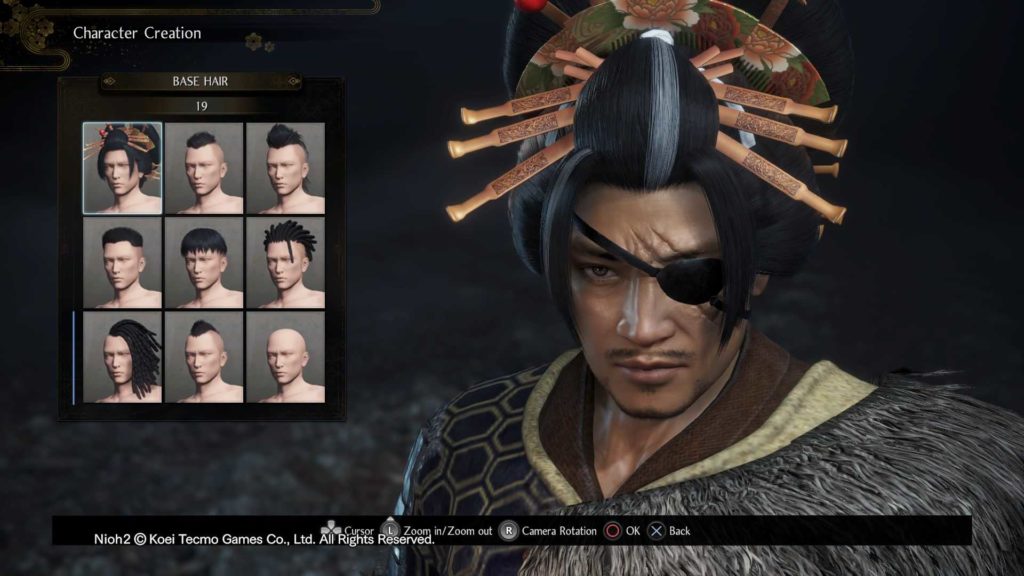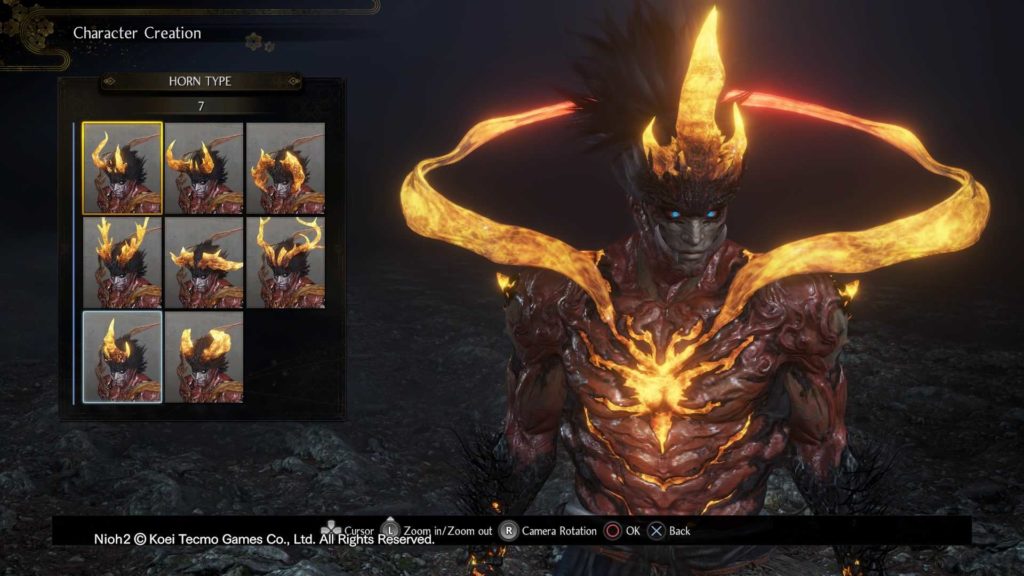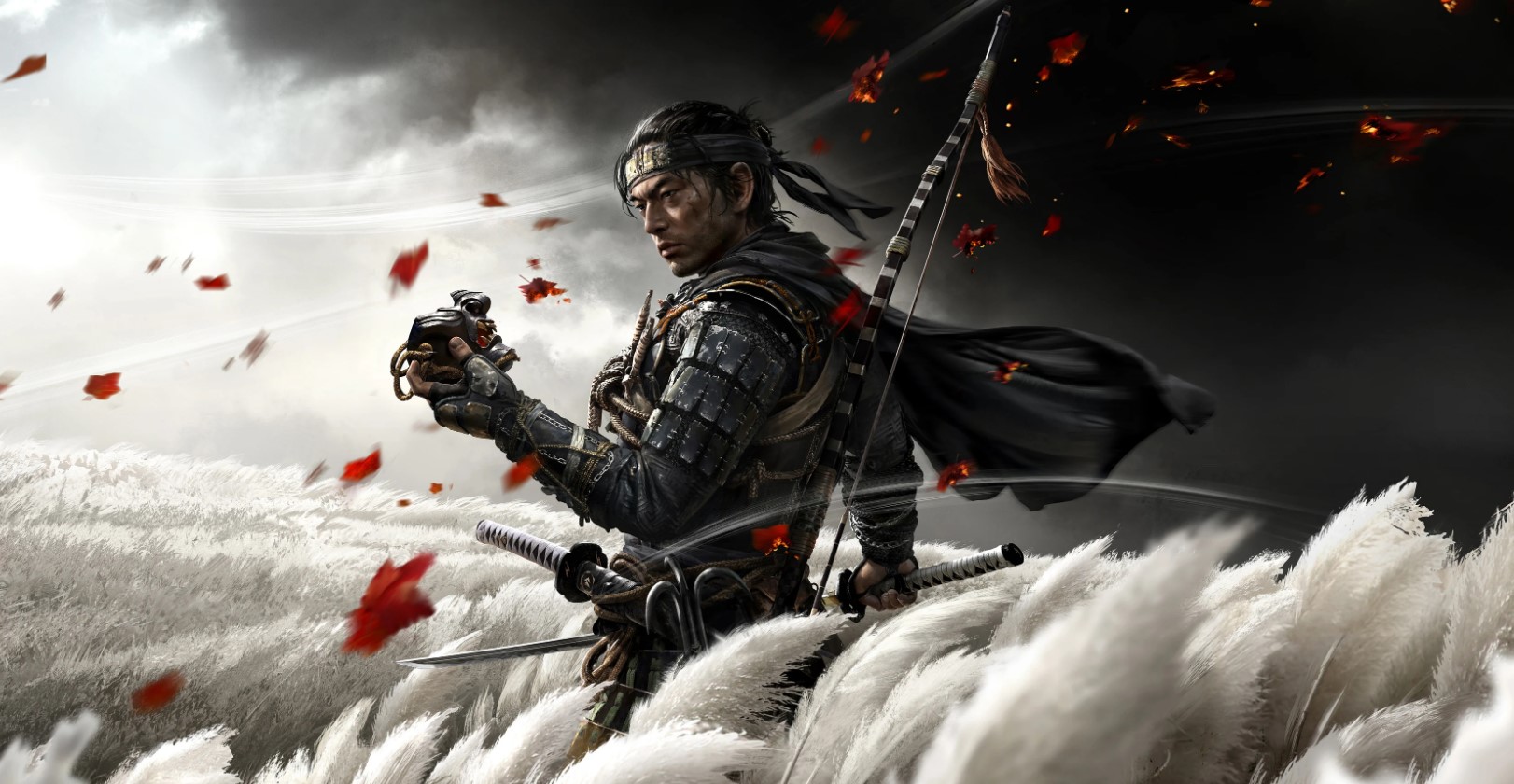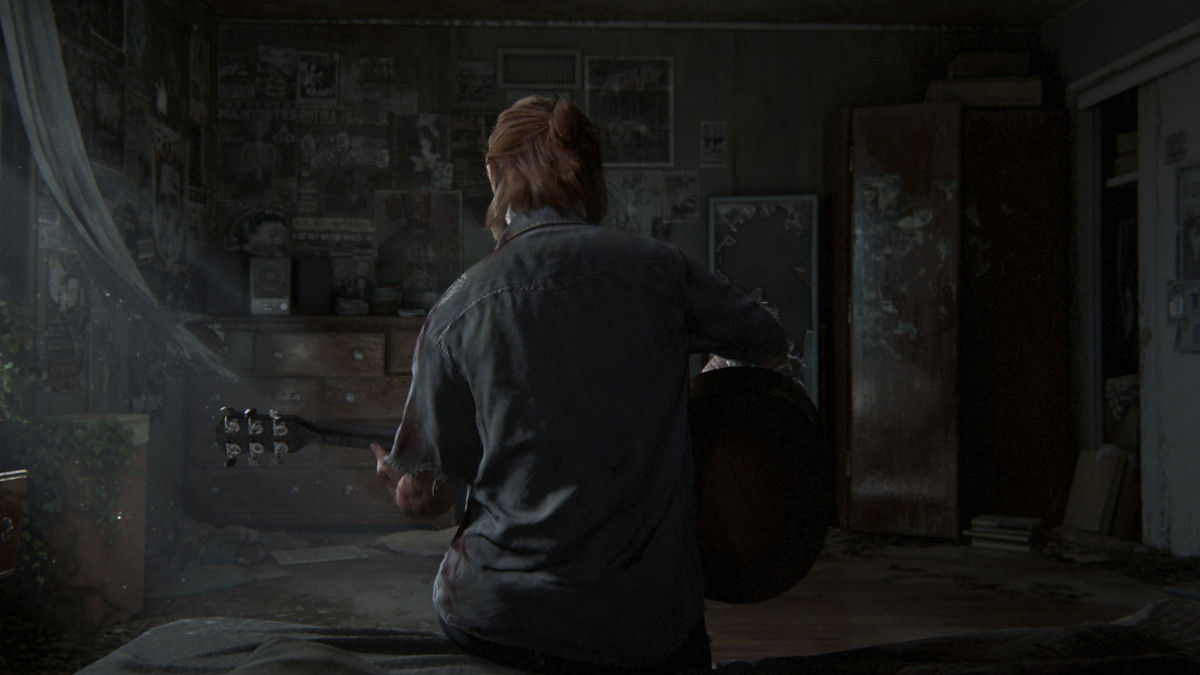Nioh 2 Review – Out with the old, in with the Nioh
One thing you can credit Capcom and From Software for is making suffering a new genre of its own. While Capcom isn’t normally in the discussion, long time hunters who have witnessed G rank first hand would beg to differ.
One thing in common with Monster Hunter and the Souls series is the level of skill needed to get good, and for teaching players to accept defeat and push through a difficult situation. Naturally, other developers have taken a stab (pun intended) at a Souls game, resulting in titles like Code: Vein and Jedi Fallen Order as the most recent entries. Enter Nioh from way back 2017, a surprise success from Koei Tecmo and Team Ninja.
While Nioh borrowed heavily from the Souls series in terms of gameplay, it managed to become its own beast through its Japanese setting, mission based progression, and introduction of its own mechanics like weapon stances and Guardian Spirits. For a new IP, Nioh proved to be a successful one, as seen with the sales and its warm reception from the gaming community. Will Koei Tecmo be able to strike gold a second time? Here’s our review of Nioh 2.
Yokai Slayers Wanted
Story-wise, newcomers will have no problem starting Nioh 2 without having to play the first game since it’s actually a prequel. Years before William’s (the protagonist from the first game) adventure, you’ll be playing a silent protagonist in Sengoku Era Japan, where as a human-yokai offspring you will be thrust into a fantasy horror story involving wars, yokai slaying, political unrest, and even more yokai slaying. Along the way you’ll meet different interesting characters like the mysterious Mumyo and even famous historical Japanese figures like Oda Nobunaga.
Character creation greets you as a new feature that Nioh 2 has over the first game. It is very detailed, from gender to height to face and even tattoos, and you’ll even be able to customize the look of your Yokai form. Don’t worry about making a mistake after finalizing your character as the game will actually allow you to redo your character completely and at no cost, even after you start your campaign. That in itself already sets it apart from most games with character creation, and is a very welcome addition. This is Koei Tecmo and Team Ninja we are talking about after all, and they do know how to make fantastic looking character models.
Cutscenes will also take your created character and their equipment into account, which is a nice touch too!
Combat and progression in Nioh 2 is almost everything you’d expect from a Souls game and a bit more. Beating enemies will net you Amrita, which you will spend levelling up your individual stats. Dying will leave all your amrita in your last known location and you’ll need to make a mad dash to your grave to retrieve them. Saving at a shrine will refill your resources while resurrecting fallen foes. You get the drift.
While the core gameplay loop is the same, Nioh introduces certain mechanics that make it a title of its own. A unique approach to the Souls style combat are the stances, which make a welcome return from the first game. Being able to position your weapon high, mid, or low will give you different ways to beat your foes. High lets you deal very powerful attacks but drains a lot of ki, potentially leaving you open to a counterattack. Low stances let you attack faster and drain less ki but are weaker. The mid stance is a balance between these two.
Figuring out an healthy mix of these stances will be important if you want to make it far into the game, as your opponents in the later levels will have improved moves of their own that will require precise movement and timing.
Using the high stance but find that your attacks are a bit too slow for you to mount a counterattack? Consider switching to mid or low to get some much needed hits in at the expense of damage. It is these small adjustments throughout the game that make the stances a deep and strategic part of Nioh’s gameplay.

Supplementing stances are the various weapons that you’ll be able to pick up and utilize in the game. You’ll be able to equip 2 melee weapons at any point in time, with each weapon boasting of a move set that differs with each stance.
Ki, or stamina, is equally as important, as all your moves are governed by this resource. All of your actions, from sprinting to attacking, will take up various Ki costs and your management of this resource will more often than not spell a difference between life and death.
To help ease the pain, there is a mechanic called a Ki Pulse which allows you to gain Ki at a much faster clip, letting you push up the pace against the Yokai. It is an integral skill to learn and master, as you’ll often find yourself at a Ki deficit if you simply pressure the enemies with attacks.
You may have played Sekiro and have loved it’s “balls to the wall” style gameplay, rewarding you by staying aggressive and giving the enemy no room to breath with a combination of counters and parries. You’ll unfortunately have to unlearn those habits because Nioh’s style of play is very deliberate and relatively slow compared to Sekiro. Some weapons in Nioh will give you the ability to pressure the heck out of an enemy but you’ll always have to keep an eye on your Ki gauge.
As a human-Yokai hybrid, you also have access to your Yokai form when you align yourself with a guardian spirit, something you choose at the start. You can take the form of a powerful Brute type, nimble Feral, or long range Phantom type. Think of it like Devil May Cry’s “Devil Trigger” forms, allowing you to “transform” and dish out maximum damage for when the situation calls for it. Each guardian spirit will let you invoke different forms, each with their own benefits and timings so the choice will ultimately be up to you.
New to Nioh 2 are Soul Cores, which allows you to use Yokai moves as a way for you to even out the odds, provided you have enough Anima, which is basically your “MP” to cast the skill. Throw a Spear like Enki or petrify an enemy using Nure-Onna’s gaze, these moves can be devastating in the right hands, so use them wisely.
Soul Cores add a whole new dimension to the game as it is a great tool to even out the odds against the enemies scattered around the world. You’ll be given a chance to level up these Soul Cores along the way, improving their effects and increasing their stat bonuses.

More than just Yokai Slaying
Your tale takes you through various missions throughout different regions in ancient Japan. Each mission consists of a large stage that you will need to traverse until you reach the end where the boss awaits. The levels are vast but if you’ve played the first game, it’s quite a disappointment that the level design remains uninspired and largely similar. Even some of the enemies from the first game make a comeback, like the Yoki’s and the Karasu Tengu’s.
Bosses, on the other hand, are designed very well in terms of looks and balance. They will test your patience and sanity as they can potentially wipe you out in a matter of seconds. You’ll realize just how good you are at taking notes while battling a boss, because you’ll need to familiarize yourself with all their attacks, patterns, as well as how many hits you can get in before you need to retreat. Consequently, there’s really nothing like the feeling of taking down a boss that you’ve struggled with for hours to figure out how to beat, and this game will force you to master the different skills it offers to get that done.
If anything, Nioh 2 really excels at balancing out the difficulty curve, making it a bit more accessible to players that are usually intimidated at such a punishing genre. That’s not to say that the game is not challenging, it just smooths out the curve, allowing newcomers and not so skilled players such us myself to progress deep in the game, giving a sense of accomplishment that will make you feel like you can actually finish the game. Again, Nioh is still challenging but given tools at your disposal like the Burst Counter and the Soul Cores, you can even out the odds of the fight better.
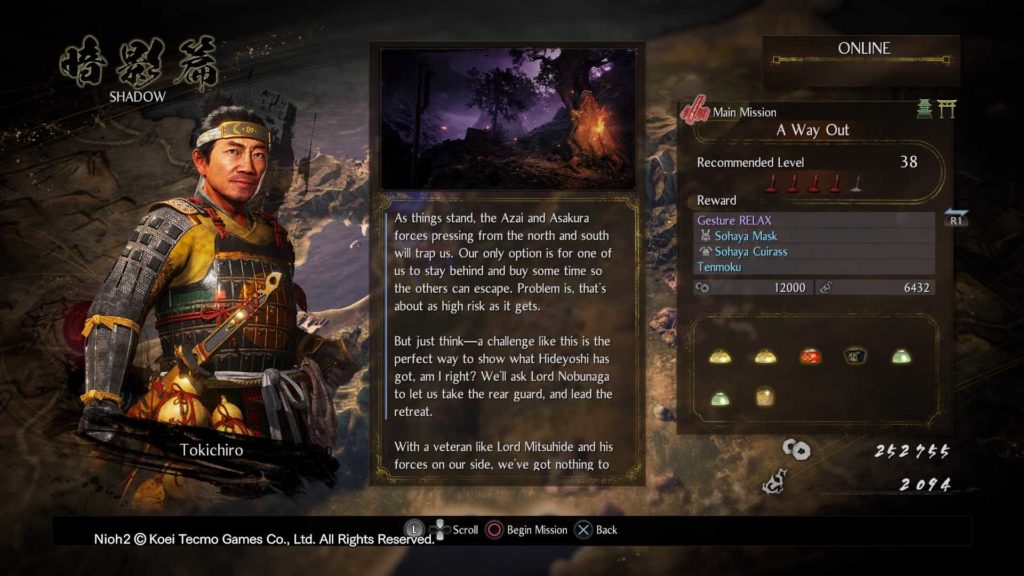
Missions also aren’t limited to the main story as there are also sub missions that will pop up, giving you more ways to level up. Occasionally, special missions called Twilight Missions will appear and these are just like any other missions, only with tougher enemies that will test your perseverance but also give you greater rewards should you succeed, allowing you to craft those weapons that will give min-maxers a smile on their faces.
There’s actually an incentive to explore as there are collectibles like hidden Kodamas in each mission that will provide a big help in your progress. Each Kodama you find will give you passive bonuses known as “Kodama Blessing”, helping you along the way. You can choose to increase the Elixir drop rate, equipment drop rate, and even amrita drop rates, so these should be one of the things to look forward to while going through the different missions.
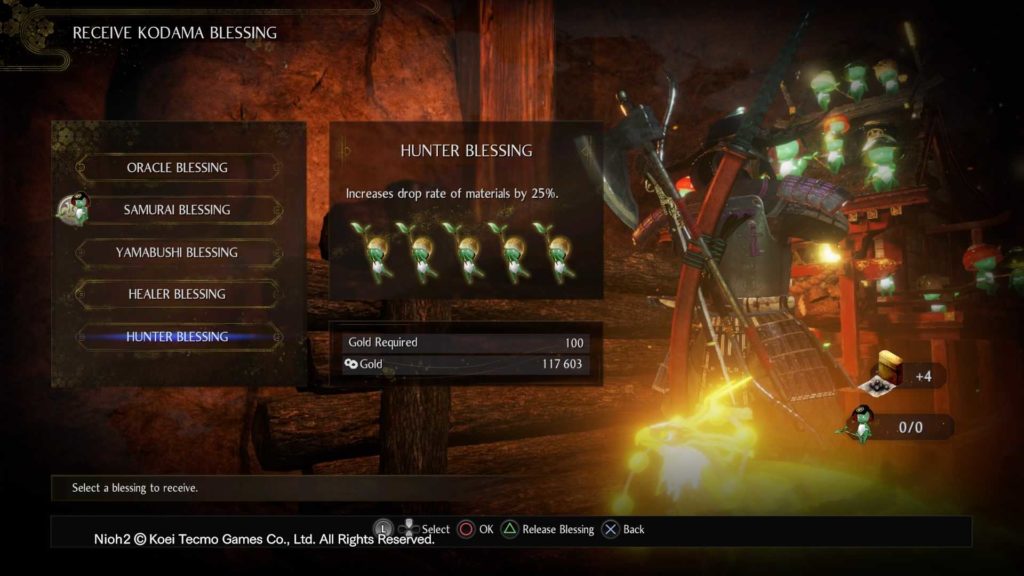
More than weapon and item gathering, taking your time in missions (and maybe repeating them) will also benefit collectors out there as there is a large variety of Yokai to slay. You’ll be able to view a gallery of the different characters and Yokai you encountered in the game and this is especially fun as you can read about their lore and if you’re to slay a certain number of a particular Yokai, more information like strategies against them will be unlocked. The attention to detail is greatly appreciated here as different Yokai in Japanese folklore were used and you’ll want to find and learn more about them as you go, despite how scary they are.
Replayability is actually a big part of the game as you’ll also earn titles from doing different things in Nioh 2, whether you’ve killed a certain number of a type of Yokai or used a certain weapon a number of times. Doing different things will give you reputation points and earning enough will give you a title, like a Nure-Onna Cutter for example, and this will net you Prestige Points.
Aside from bragging rights, you’ll wants Prestige Points as they can be used to buy passive buffs like increasing the number of amrita you earn or increasing your life and ki. This very much encourages you to try out the different weapons in the game and try to find and slay a wide variety of enemies. If anything, records of these can also be viewed in the Options menu, including your number of deaths (273 times and not afraid to show it).

Beauty in horror and destruction
Nioh 2 may very well be classified as a dark fantasy despite being also based on Japanese history, and the sound and presentation just shows it beautifully. Aside from the atmospheric areas fitting of the time along with the haunting music, the Yokai designs should be given big props because of how terrifying they look.
Be ready for some jump scares here too as Yokai can sometimes get the jump at you. They’re vicious as they are scary, and the sounds you hear like a Nure-Onna’s breathing as it slithers after you gives off a sense of dread, even if you’re a properly armed Yokai slayer.
The Yokai bosses you encounter too are the stuff of nightmares. Mezuki will initially scare you with its demon horse look, and that’s just the first boss. The attention to detail also extends to the weapons. Yokai don’t bleed so when you cut one down you don’t see blood left on your blade. In contrast, killing an enemy human does, very much reminiscent of Ninja Gaiden II on the Xbox, though not as gory.
It takes three to tango
Part of the fun is the online aspect, and Nioh 2 has that edge over it’s predecessor. If you opt to go online, you’ll also find red and blue graves when out on missions. These represent AI controlled Revenants and Benevolent Souls, respectively. Both are other players who have died in that area, only Revenants will attack you when you summon them, and Benevolent Souls will be your AI partners (provided you have the Ochako Cups to spare summoning them).
You’d be wise to take advantage of an extra body in the field and if you’re lucky enough, you can summon a high leveled individual to help you breeze through the mission. Not gonna lie, summoning high leveled benevolent graves have saved me from a couple of particularly hard boss encounters. It’s nothing to be ashamed of, and you’d be stubborn to not want to take advantage of what’s there.
If AI help isn’t your thing, you can duke it out with real players too. Using the Ochako cups which you also can get from Revenants, you can summon actual human players to assist you during missions, for up to 3 times the demon slaying goodness. This at least eases the difficulty of completing missions and it’s particularly fun beating up a boss that gave you a hard time previously. You can either team up with a specific player or just let the game randomly assign you to a player that issued a summon.
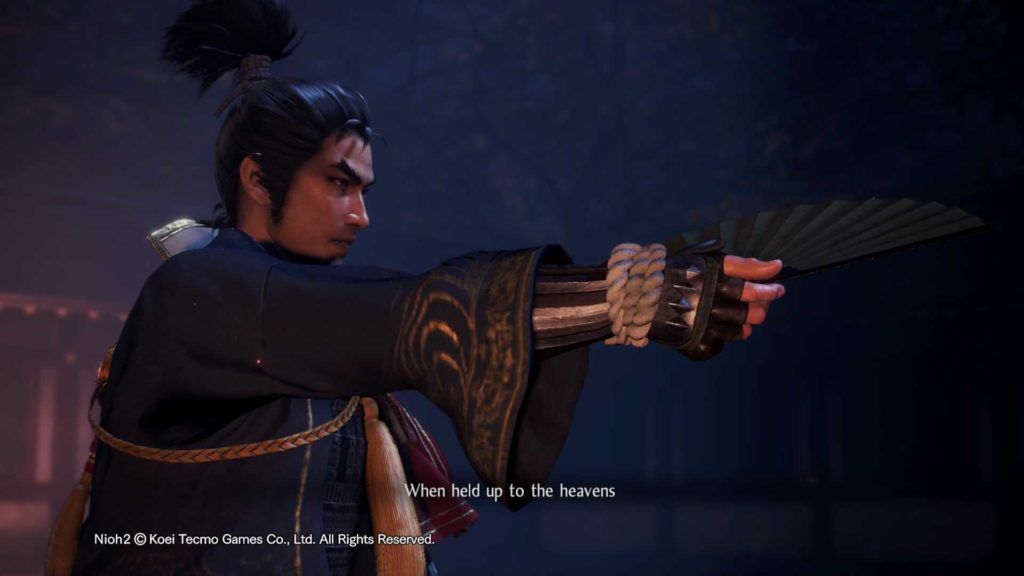
Dare to be different
Souls games don’t need to be exact clones of each other, and Nioh 2 is a great example of that. Sure, they’re supposed to be frustratingly difficult but they don’t need to be too unforgiving, and a little tweak in the presentation makes for a fresh experience. With Nioh 2, you could say that it’s a great starting point for newbies who want a taste of the masocore genre without turning them away fast enough to not appreciate the finer details of the game.
There are quite a number of things that can actually help you out in the game. Take for example the “invisible walls” as we’d like to call them. While you can still fall to your death when walking off an edge, performing combos close to the edge will actually prevent you from falling. Even during combat sometimes when you’re near the edge of some cliff, you’ll see your character losing balance and you’ll get a few seconds to try and regain that balance. For a Souls game, that’s very generous and doesn’t take away from the fun at all.
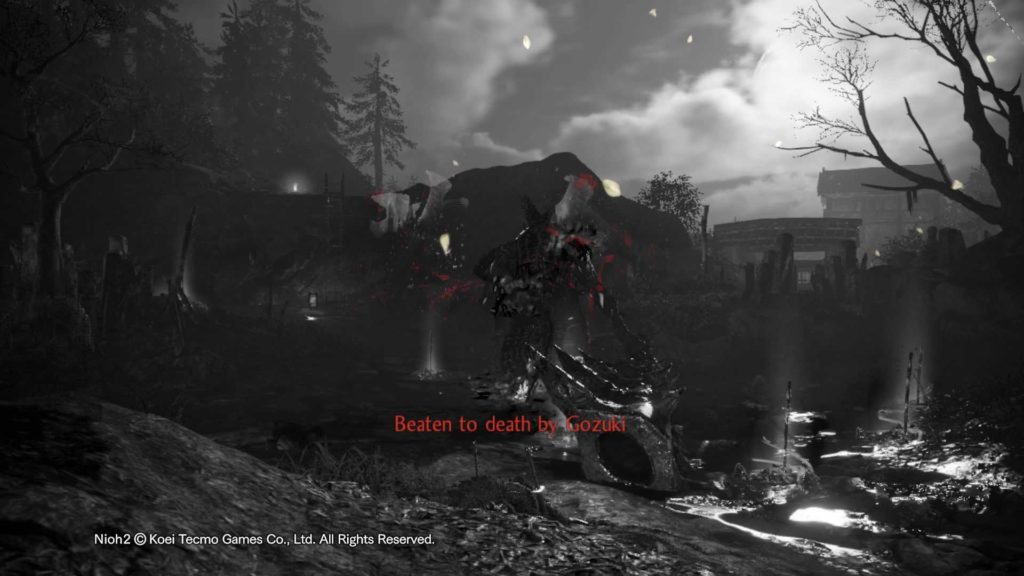
Nioh 2 is a fantastic title, no two ways about it. It’s a title that has grown into its own identity through its presentation, combat innovations, and emphasis on Japanese history and mythology. Any flaws that can be seen in the game can just be some minor nitpicks but throughout our nearly 60 hour playthrough of the game, which could be way less if we didn’t keep dying, the good most definitely outweighs the minor peeves we had.
The story isn’t exactly groundbreaking but the cutscenes are fun enough to watch through, especially if you created a nice enough character to flaunt off. In contrast to all the gloom you see in Dark Souls or Bloodborne, there are some scenes in Nioh that’ll get you to laugh a little despite the dark nature of the story.
What we liked:
- Great presentation of Japanese Folklore
- Atmospheric presentation
- Challenging but rewarding gameplay
- Expands beautifully on the features of the first game with additions like the Burst Counter and the Soul Cores
- Meaty campaign with lots of missions to burn through
What we didn’t like:
- Still frustratingly hard
- Level design is uninspired and feels (and looks) very much like the first game
- Menus could be a bit more streamlined
Verdict: Buy It!

Nioh 2 straddles the fine line between unfair and challenging and it hit a sweet spot that will encourage more people to actually try the game out. The game keeps its challenging nature intact but also provides you with the tools and skills to give you more than a fighting chance. Heck, we’ve gone through a couple of bosses by actually just letting the high leveled benevolent graves do all the work!
Nioh, as a franchise, introduces smart and logical features that make it stand out from the absurd number of soulsborne clones out there. While we don’t think it’s quite on the level that a game of the year contender has, Nioh 2 is a remarkable improvement over the first and will surely satiate your desire for punishment and challenge.
*Nioh 2 was reviewed on a PS4 Pro through a review code provided by the publisher.

